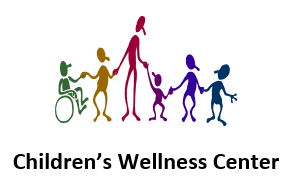Antibiotics: Preventing Unnecessary Use
Viral Infections
Viruses cause most infections in children:
- All colds
- All cases of croup
- Most (99%) coughs
- Most (95%) fevers
- Most (90%) sore throats
- Most (99%) cases of diarrhea and vomiting
Antibiotics have no impact on viral infections. One of the more important decisions made daily by every physician is whether a child’s infection is viral or bacterial.
Bacterial Infections
Bacterial infections are much less common than viral infections. Bacteria causes:
- Some ear infections
- Most sinus infections
- Ten percent of sore throats (strep throat)
- Whooping cough (pertussis)
- Some pneumonias (lung infection)
Some symptoms are overrated as indicators of a bacterial infection. Yellow nasal discharge is more likely to be a normal part of the recovery from a cold than a clue to a sinus infection. Yellow phlegm (sputum) is a normal part of a viral tracheitis or bronchitis, not a sign of pneumonia. High fevers can be due to a virus or bacteria.
Prevention of Bacterial Infections
Another false belief is that children with colds need antibiotics to prevent ear or sinus infections. In some cases the antibiotic does work, but in most cases the antibiotic just selects out germs that are resistant to it, making future infections harder to treat. It’s smarter to save the antibiotic for those children who go on to develop a bacterial infection. After a cold, about 10% of children develop an ear infection (otitis media) and 1% develop a sinus infection (sinusitis). Why give antibiotics to the other 89% who don’t need them?
Bacterial Resistance
When bacteria become resistant to an antibiotic, that antibiotic can no longer kill that type of bacteria. Excessive use of antibiotics is the number one cause of resistant strains of bacteria, and research shows that half of all prescriptions for antibiotics are inappropriate (mainly when they are given for coughs and colds). This makes future treatment of bacterial infections more difficult. Many bacteria are now resistant to antibiotics that used to control them. When we turn to newer and more expensive antibiotics, bacteria develop resistance to them as well. In the battle between antibiotics and bacteria, the bacteria seem to be winning.
Side Effects of Antibiotics
If your child doesn’t need an antibiotic, giving him one is a bad idea because all antibiotics have side effects. Some children taking antibiotics develop diarrhea, nausea, vomiting, or a rash. If a rash occurs, we are left with the difficult question; is it a drug allergy or an unrelated viral rash (such as roseola)? Since it’s difficult to be sure, many children are mislabeled as allergic to a family of antibiotics, and a potentially useful antibiotic is not available when the child really needs it.
Summary
Don’t wish your child were on an antibiotic unless he or she really needs one. Don’t pressure your child’s doctor for an antibiotic. If your child has a viral illness, an antibiotic will not shorten the course of the fever or help the other symptoms. Antibiotics will not get your child back to school or you back to work sooner. If your child develops side effects from the antibiotic, he or she will feel worse instead of better.
Let’s save antibiotics for ear infections, sinus infections, strep throat, and other bacterial infections. Let’s not waste them on yellow nasal discharge, yellow phlegm, high fevers, and other normal symptoms associated with coughs and colds. Treat your child’s symptoms with over-the-counter medicines or home remedies. Many just need extra TLC until they feel better. Call back if your child develops any new signs that suggest a bacterial illness. Usually antibiotics are not the answer when your child becomes sick.
Adapted from Instructions for Pediatric Patients, 2nd Edition, 1999 by WB Saunders Company. Written by Barton D. Schmitt, MD, pediatrician and author of Your Child’s Health, Bantam Books, a book for parents.

